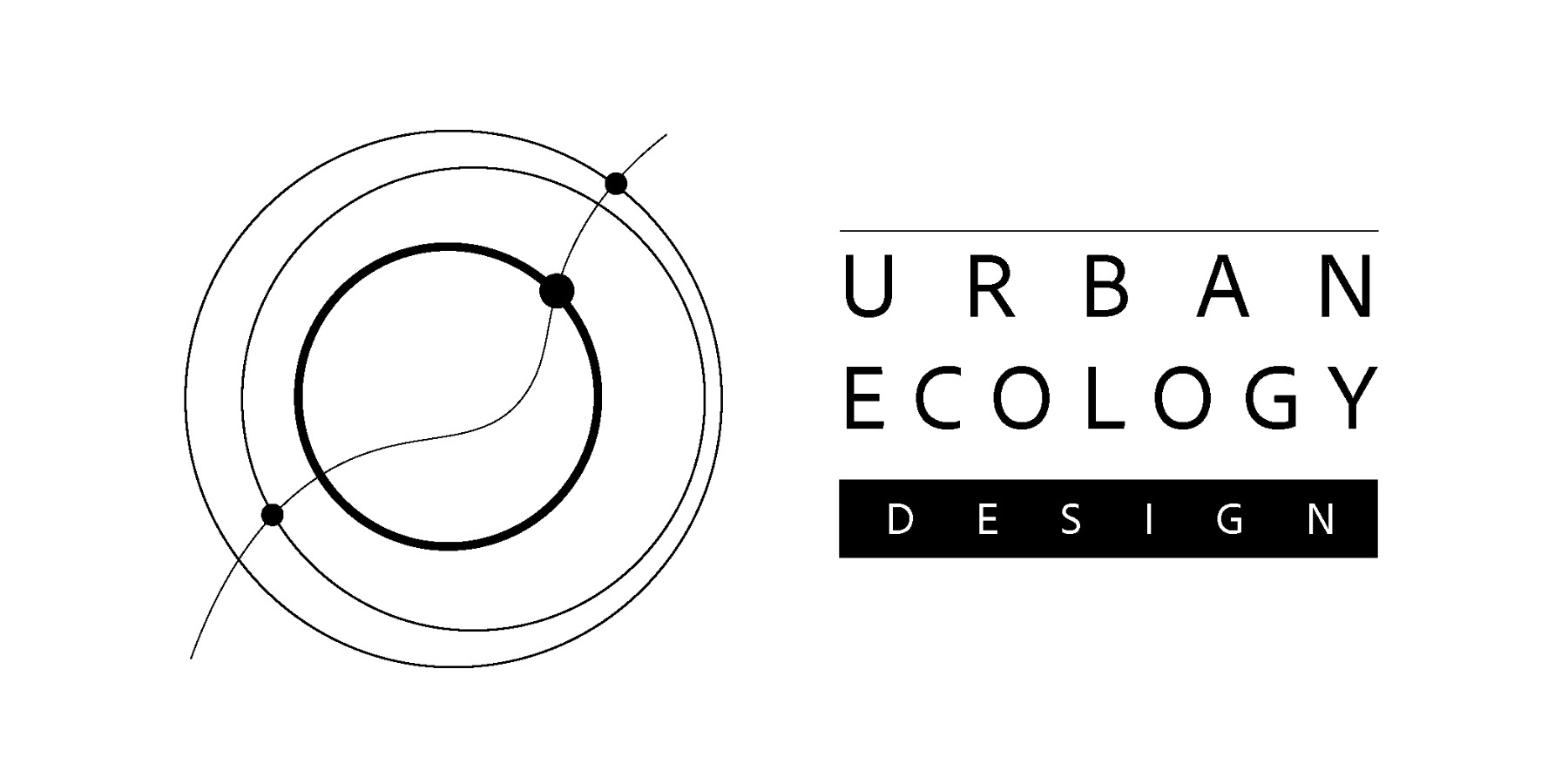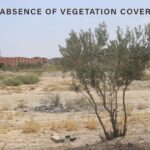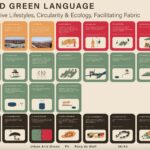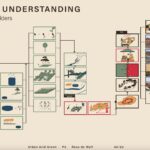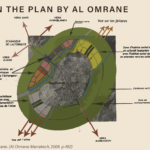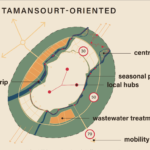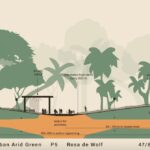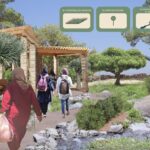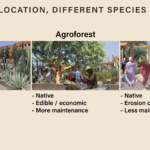Urban Arid Green
A sustainable approach to address population growth and urbanisation in arid areas, via a case study to Tamansourt
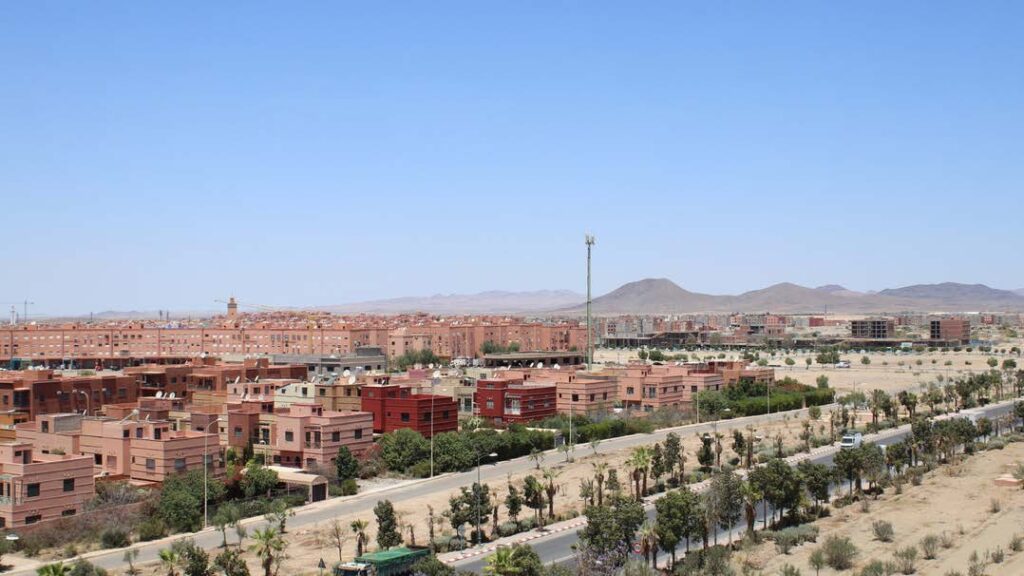
Tamansourt, a Moroccan new town, faces challenges of resource scarcity and desertification worsened by climate change. Rapid urbanization and limited job opportunities strain its dense layout. The task is to create sustainable urban spaces to foster community interaction and address resource scarcity, transforming Tamansourt into a model for arid urban areas.
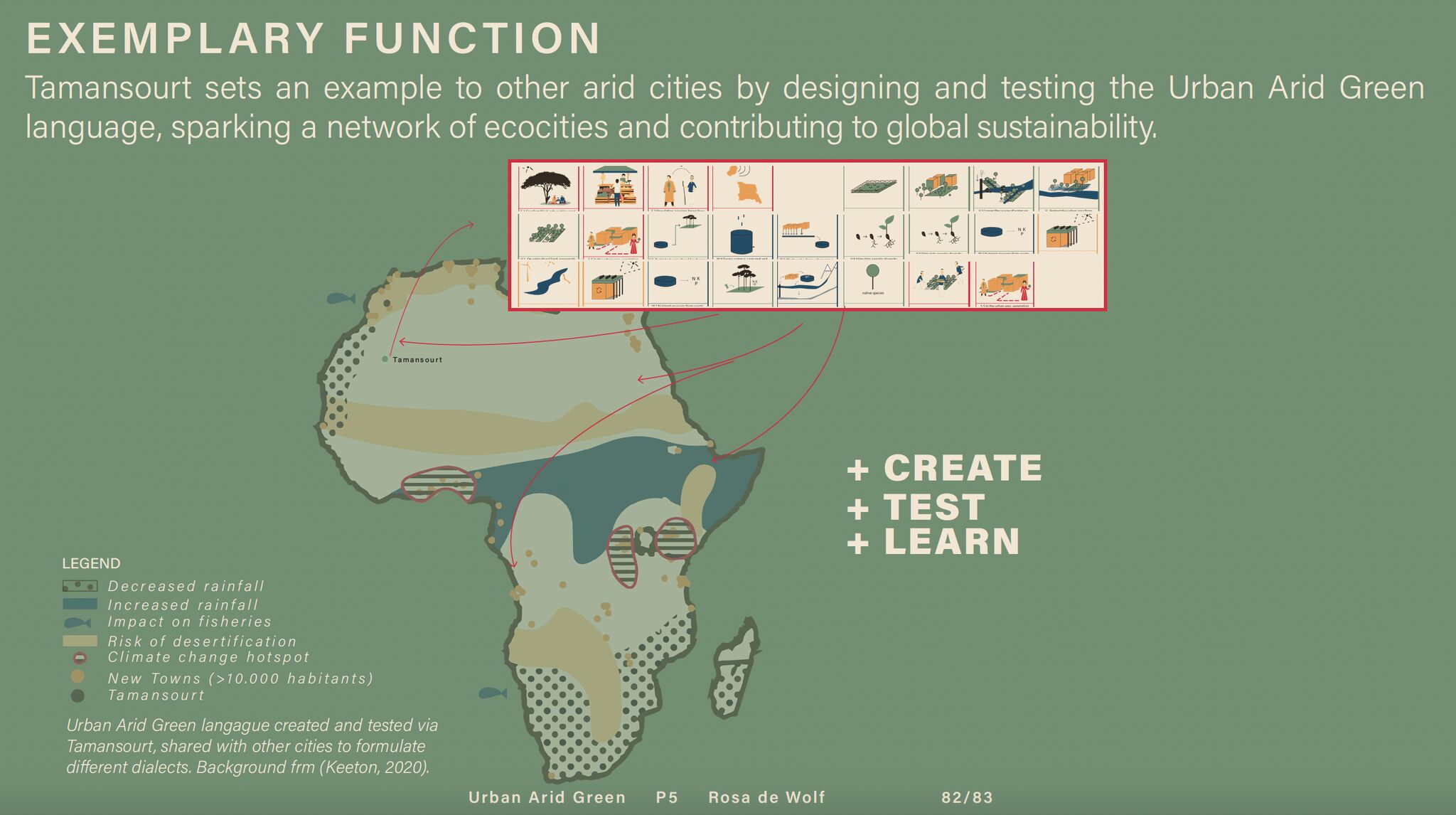
Author
Rosa De Wolf
Location
Tamensourt, Morocco
Mentors
Dr.ir. Nico Tillie
Kristel Aalbers
The climate crisis and unsustainable growth are worldwide interrelated problems. Population growth increases the demand for natural resources and the demand for housing. This is all putting pressure on the natural system and is strengthening the conflict of space between the built environment, agricultural land and the natural landscape. Drylands are expected to expand due to climate change and human activities. As the natural resources are already scarce in these regions, human societies who live there are challenged even more by population growth. Including the future generations. The conflict of space deteriorates the quality of life and space in these regions. To counteract this development, measures must be taken now.
This research proposal searches for an integral approach to sustainably address population growth and urbanisation in arid regions. This is done via a case study of the Moroccan new town Tamansourt. Tamansourt is one of the nineteen Moroccan new cities developed via the state-led national-scale Villes Nouvelles strategy. Tamansourt, Marrakech’s satellite city, is the first new town under this strategy, it is founded in 2004. The spatial analysis, site visit, and interviews conducted in this research show that the city of Tamansourt is still under construction. The city has not reached its target population nor its desired level of urban activity yet. However, environmental issues already manifest themselves in the city, which resulted in the national government’s aim to transform Tamansourt into an ecocity.
In the Urban Arid Green project, the vision Tamansourt Ecocity 2040: Regreen to Rewild is formulated. This is a proposal to advance on a transformative framework for Tamansourt towards an ecocity. This could help Tamansourt to reach its original goals, respond to current injustices and face the environmental crises at the same time.
To transition Tamansourt into an ecocity, systemic change is needed. The environment must be harnessed. The now degraded soil quality must be restored. This environmental change can be sparked by making optimal use of the limited amount of water. By educating, training and employing the local community, the ecocity can be co-created, using bottom-up initiatives and top-down support.
To support this systemic change, a common language among all future stakeholders is needed. This common language is developed as a set of urban development guidelines, patterns. This is a brief visual overview of all measures included in the systemic change, vision, and design of Tamansourt Ecocity 2040. The patterns focus on the biosphere and add to the original design guidelines for Moroccan new towns, which were developed by Al Omrane in 2010. Together, they form the Urban Arid Green pattern language which aims to sustainably address population growth and urbanisation in the arid region.
In the Urban Arid Green project, the case of Tamansourt is used to show how to translate these generic patterns and ecocity principles into a unique site-specific design. Design proposals on the neighbourhood scale are made for several key locations in the Tamansourt Ecocity 2040 vision. The design aims to formulate a framework for the stakeholders to use in the city’s transition towards an ecocity. This framework aims for a triple scope of better services, amenities, and connections on one hand and to counteract environmental decay and climate change variability on the other. Via an adaptive pathway approach, the process can adapt to future uncertainties, while learning from the past. This approach allows different scenarios to reach the Tamansourt Ecocity 2040 goal.
The process of applying these patterns to the Tamansourt Ecocity 2040 project was one of constantly adjusting, designing, and testing. By testing the method in Tamansourt, other arid landscapes that need to sustainably address population growth and urbanisation, can learn from this, and use it as a tool to communicate with all different stakeholders involved. Every landscape might need to add its own site-specific pathway to the pattern language. By this, the Urban Arid Green Language allows unique dialects for different landscapes.
Tamansourt sets the example to other urban arid areas, being the first new town ecocity, focused on a regenerative productive urban landscape.
